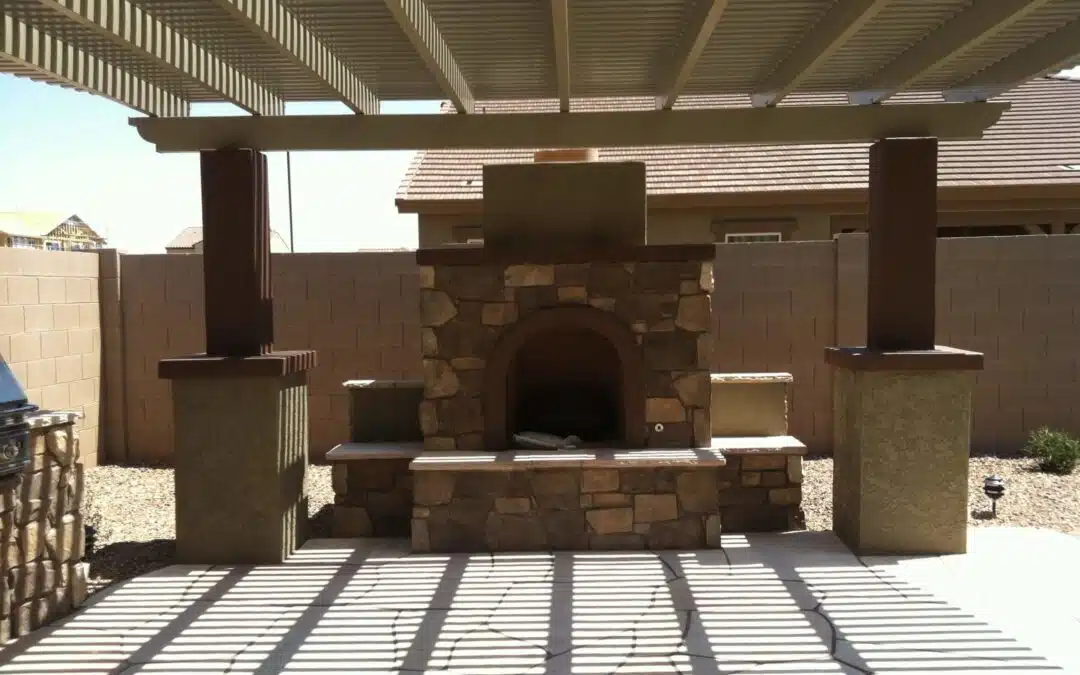You can find plenty of options when you’re looking for ideas on how to spruce up your outdoor living space. Gazebos, arbors, and similar structures provide you with shade as well as beauty. One option you may not have considered is a pergola.
What Is a Pergola?
A pergola is an outdoor fixture built with columns that hold up a grid of rafters or beams. It can be attached to the house or freestanding, and some pergolas have a cover or screen over the grid while others leave it open. Pergolas are low maintenance, with just a few components, including support beams and a roof design that may include lattice.
How Are Pergolas Used?
Pergolas are a positive addition to your home for multiple reasons, and they can be used just about any way you want. Some homeowners choose them only for their aesthetic value. They are a lovely and inexpensive way to increase your home’s value, beautifying the lawn and garden areas. Pergolas help break up the monotony of a flat empty backyard with contrasting shapes and colors. You can also dress up your pergola with hanging plants and lighting.
Pergolas have practical purposes as well. For homeowners who spend time outside, pergolas can add another “room” when placed over a patio close or attached to the home. Pergolas allow you to create a private, shady area in the backyard using plants, curtains, or fabric along the sides and top.
How Is a Pergola Different From Other Structures?
Pergolas are similar to other structures, but some essential differences differentiate them in form and function. Here are a few examples of how pergolas compare to other items.
-
- Arbors, usually made of vinyl, are similar to pergolas. However, arbors are generally smaller in all dimensions and more straightforward in design than a pergola. They lack the carved architectural columns, for example. A curved arch at the top is a hallmark of an arbor. The structures are usually freestanding and serve as a welcoming entryway. Pergolas have a flat top and more architectural details. Arbors often support vines, whereas pergolas cover a part of a garden area.
- Gazebos are wooden structures with closed roofs. They may have raised floors, and traditionally they are round with benches incorporated. Pergolas, on the other hand, usually have an open ceiling and no floor. They are square or rectangular.
- Carports are structures for sheltering vehicles, commonly used with homes that do not have a built-in garage. Carports are simple structures, made basically with just a closed roof and support posts. Pergolas do not have a closed roof, though some people choose to cover them for shade.
What Are Some Types of Pergolas?
Pergolas come in many varieties. Here are some of the most common types based on the materials from which they are constructed.
-
- Vinyl pergolas are very common because they are inexpensive, classically designed, and durable. You can choose from many designs and sizes to fit your available space and personal taste. While bright white is the most common choice, other colors are available as well.
- Open-top pergolas often set apart a section of a lawn. They allow plenty of light and air to move through. Wrapping the pergola in climbing vines adds greenery and natural beauty without disrupting the flow of light.
- Steel pergolas are suitable for locations with extremely hot or cold seasons. Steel has a long useful life, but the appearance does not appeal to everyone, as it is very modern and not traditional.
- Sail pergolas have cloth or fabric instead of the conventional lattice roof. This style is a popular choice if you’re looking for shade.
- Gable or pitch pergolas have a unique roof design that directs water off the roof. This type of pergola works well over a patio or deck to protect a hot tub or eating area.
Need Help Building a Pergola?
A well-crafted pergola can elevate your outdoor space—but if it’s poorly built, it can do more harm than good. At Mesquite Landscaping, we specialize in professionally designed and built pergolas that not only enhance your home’s curb appeal but also create the perfect spot to relax or entertain. From planning to completion, our experienced team is here to handle every detail.
We proudly serve Chandler, Mesa, Gilbert, Queen Creek, Apache Junction, Coolidge, Florence, Gold Canyon, Laveen, Santan Valley, and Tolleson AZ.
📞 Call us today at (480) 238-2943 to get started!
Featured Image: Blue Amber Design KC/Shutterstock
Cons of Installing Artificial Grass
Now for the part no one likes to talk about—but needs to.
1. Surface Heat
Here's the big one: artificial grass gets hot.
During Arizona summers, turf can heat up to 30–50 degrees hotter than natural grass. That means surfaces can become uncomfortable—or even dangerous—for bare feet and paws.
Solutions include installing shade structures, using cooling infill, or misting systems to lower temperatures.
2. Potential Environmental Concerns
While it conserves water, artificial turf is still made from synthetic materials.
That means at the end of its life, disposal could become an issue if it’s not recyclable. Some brands are working toward greener products, so ask your landscaping company about sustainable options.
3. Limited Biodiversity
Artificial lawns don’t support the same ecosystems as natural ones.
Bees, butterflies, and beneficial insects rely on real plants for survival. If creating a pollinator-friendly environment is important to you, you’ll want to reserve at least part of your yard for real greenery.
4. Repairs and Replacement
Turf is tough—but it’s not indestructible.
Heavy furniture, sharp objects, or poor installation can cause damage. While individual repairs are possible, they can be noticeable and sometimes costly.


